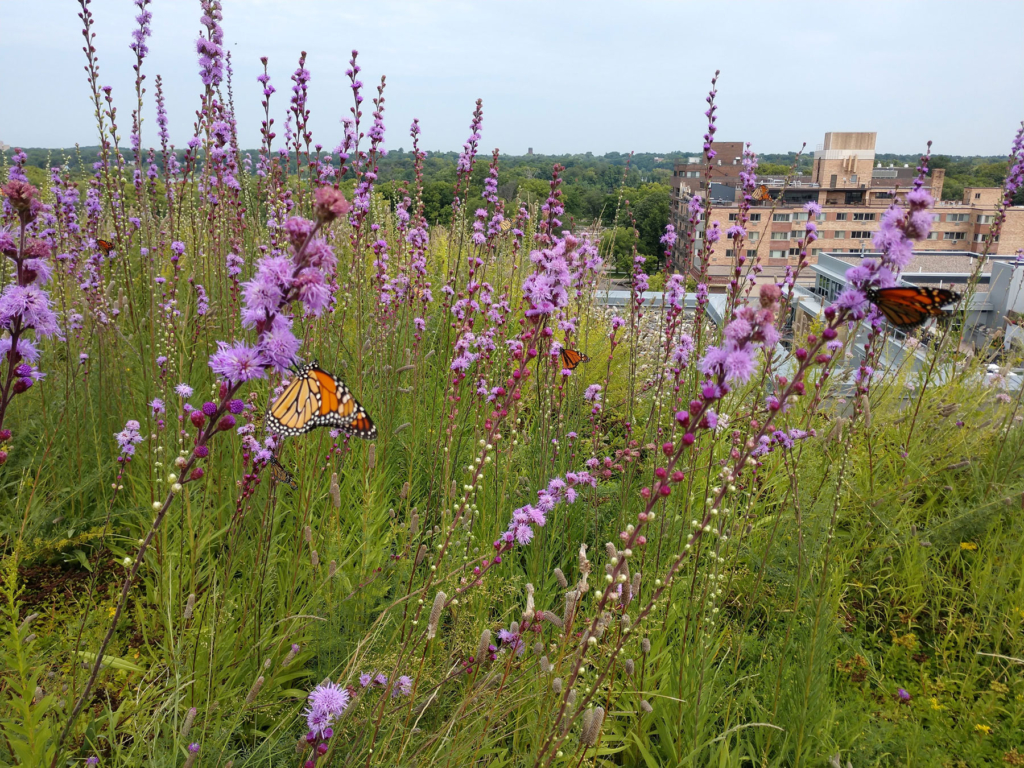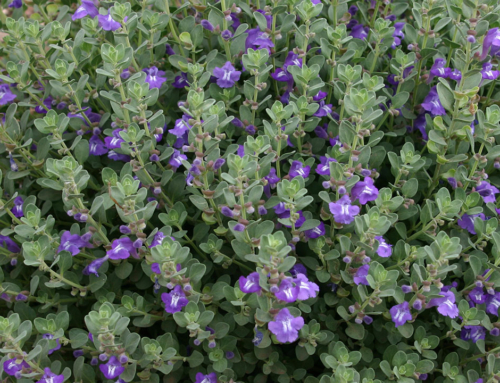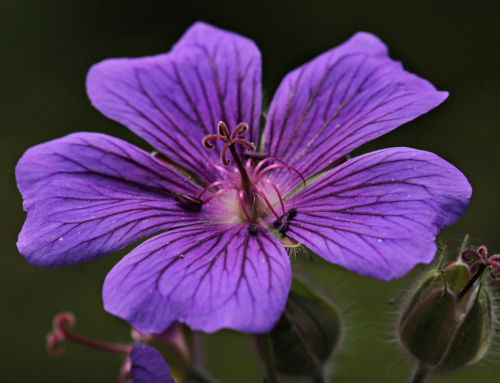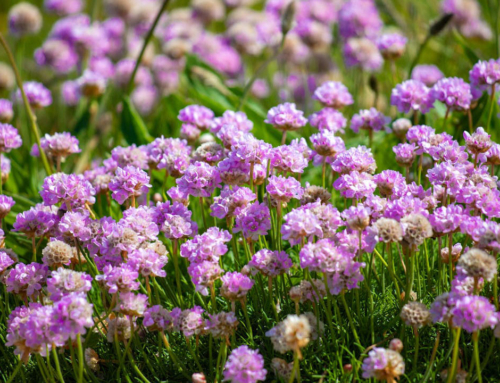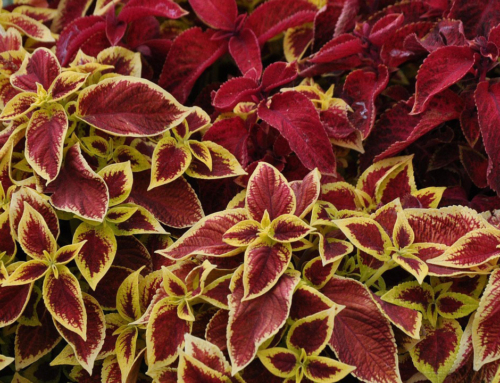Have you ever stayed in a high rise hotel or work in a downtown office where you can see other buildings below? Your views of their rooftops likely encompass air conditioning units, black rubber roofs with gravel, or dirty white roofs. However, more urban areas are evaluating rooftop spaces to offer additional productive benefits such as solar photovoltaic, amenity decks, and vegetated roofs.
‘Green,’ defined in this capacity, refers to vegetated systems atop conventional roofing. The green roof industry in the United States is just over 20 years old. The technology is sought for its many public and private benefits, including managing storm/rain water, roof longevity, and serves as a resource for biodiversity. While most green roofs are on large commercial and government buildings, some private residences have them on their houses or garages. Cities that have identified storm sewer issues due to urban sprawl and impervious surfaces (ie parking lots), such as Washington DC and Milwaukee, have seen the most growth in green roof construction.
Green roofs are designed with a minimum of 3″ growing media. The media is blended specifically for rooftops. We don’t amend it regularly on the roof as you would in a vegetable garden. Weight is also a consideration since it’s on a structure, therefore it needs to be lightweight. Sedums are the typical plant palette with a thin profile, however, increasing the growing medium depth, we can introduce herbaceous forms like Allium, Coreopsis and Liatris or even native grasses like Bouteloua.
After design and construction, buildings owners become responsible for green roof maintenance. Above all else, every rooftop has its unique micro-climate, and expertise is needed for various design, plant, technical, and installation consideration. I started my local company specifically to address these situations. When asked to bid on maintenance, there are certain things I look for. Is the green roof fully exposed to sun, with limited access? Was it designed to have people visit the space and enjoy it as an amenity? What kinds of biodiversity live on these cool rooftop systems? Will there be irrigation? We then cater each maintenance program to the budget.
 One of my favorite projects has been the downtown Minneapolis Target Center. We maintain the 2.5 acre green roof, which includes both Sedum and natives. Early in the season, the growing media is covered by a blend of sedums. Late in May, native strawberries are producing fruit! At some point in the summer, the natives have taken over, and by fall Aster grows up to my hip! The native bees love it there — especially the bee boxes we’ve installed for them. Monarchs and other butterflies are often seen flitting among the flowers. It’s not open to the public, but you can see this roof at the Loews hotel if you are lucky to claim an executive room.
One of my favorite projects has been the downtown Minneapolis Target Center. We maintain the 2.5 acre green roof, which includes both Sedum and natives. Early in the season, the growing media is covered by a blend of sedums. Late in May, native strawberries are producing fruit! At some point in the summer, the natives have taken over, and by fall Aster grows up to my hip! The native bees love it there — especially the bee boxes we’ve installed for them. Monarchs and other butterflies are often seen flitting among the flowers. It’s not open to the public, but you can see this roof at the Loews hotel if you are lucky to claim an executive room.
My academic background is in Horticulture, where I received a Masters from Michigan State University. I took the knowledge from my green roof plant research and applied it in a very small, but growing, industry. Since 2002 I’ve been involved in approximately 55 acres of vegetated roofing. Our industry employs horticulturists, researchers, designers, and construction trades. I was lucky to have fallen into this unique career of designing plants for the right place, those places just happen to be on roofs!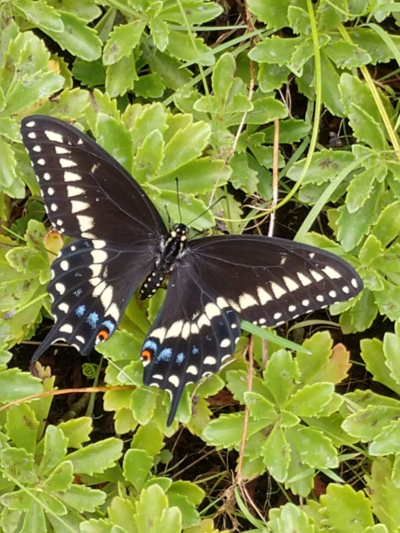
I became a Hennepin County Master Gardener volunteer to utilize all the great resources we have access to- especially the current talks on climate change and how Minnesota’s ecotypes will change over the next few decades. Since green roofs cool cities down and manage rainwater, they can help alleviate some of the issues we are forecasting in the future. Many plants that I use in green roof design are also great in the urban setting, therefore I enjoy volunteering for events that allow me to help make recommendations to homeowners on their low impact landscapes.
My hope for all reading this article is to see potential in our rooftops and think differently about these unused spaces. As gardeners are using space in new and creative ways, we should also consider roofs!
If you’d like more information about green roofs or see more local projects, please check out the MN Green Roofs Council mngreenroofs.org
Angie Durhman owns AD Greenroof LLC, has been a UMN Extension Hennepin County Master Gardener volunteer for five years, and a Green Roof Professional for fifteen years.
Photo credit: © AD Greenroof LLC
